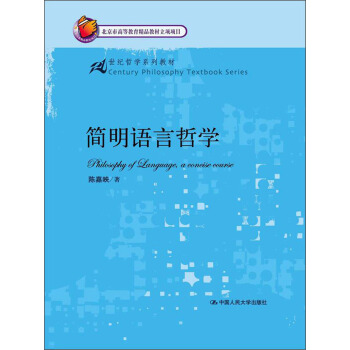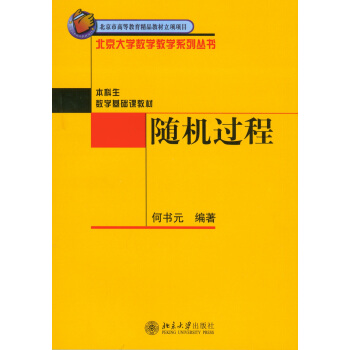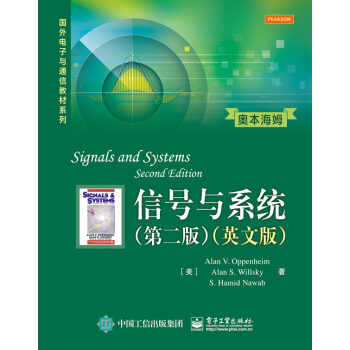

具體描述
內容簡介
《信號與係統(第二版 英文版)》是美國麻省理工學院(MIT)的經典教材之一,討論瞭信號與係統分析的基本理論、基本分析方法及其應用。全書共分11章,主要講述瞭綫性係統的基本理論、信號與係統的基本概念、綫性時不變係統、連續與離散信號的傅裏葉錶示、傅裏葉變換以及時域和頻域係統的分析方法等內容。《信號與係統(第二版 英文版)》作者使用瞭大量在濾波、采樣、通信和反饋係統中的實例,並行討論瞭連續係統、離散係統、時域係統和頻域係統的分析方法,使讀者能透徹地理解各種信號係統的分析方法並比較其異同。
目錄
CONTENTS1 SIGNALS AND SYSTEMS 1
1.0 Introduction 1
1.1 Continuous-Time and Discrete-Time Signals 1
1.1.1 Examples and Mathematical Representation 1
1.1.2 Signal Energy and Power 5
1.2 Transformations of the Independent Variable 7
1.2.1 Examples of Transformations of the Independent Variable 8
1.2.2 Periodic Signals 11
1.2.3 Even and Odd Signals 13
1.3 Exponential and Sinusoidal Signals 14
1.3.1 Continuous-Time Complex Exponential and Sinusoidal Signals 15
1.3.2 Discrete-Time Complex Exponential and Sinusoidal Signals 21
1.3.3 Periodicity Properties of Discrete-Time Complex Exponentials 25
1.4 The Unit Impulse and Unit Step Functions 30
1.4.1 The Discrete-Time Unit Impulse and Unit Step Sequences 30
1.4.2 The Continuous-Time Unit Step and Unit Impulse Functions 32
1.5 Continuous-Time and Discrete-Time Systems 38
1.5.1 Simple Examples of Systems 39
1.5.2 Interconnections of Systems 41
1.6 Basic System Properties 44
1.6.1 Systems with and without Memory 44
1.6.2 Invertibility and Inverse Systems 45
1.6.3 Causality 46
1.6.4 Stability 48
1.6.5 Time Invariance 50
1.6.6 Linearity 53
1.7 Summary 56
Problems 57
2 LINEAR TIME-INVARIANT SYSTEMS 74
2.0 Introduction 74
2.1 Discrete-Time LTI Systems: The Convolution Sum 75
2.1.1 The Representation of Discrete-Time Signals in Terms
of Impulses 75
2.1.2 The Discrete-Time Unit Impulse Response and the Convolution-Sum
Representation of LTI Systems 77
2.2 Continuous-Time LTI Systems: The Convolution Integral 90
2.2.1 The Representation of Continuous-Time Signals in Terms
of Impulses 90
2.2.2 The Continuous-Time Unit Impulse Response and the Convolution
Integral Representation of LTI Systems 94
2.3 Properties of Linear Time-invariant Systems 103
2.3.1 The Commutative Property 104
2.3.2 The Distributive Property 104
2.3.3 The Associative Property 107
2.3.4 LTI Systems with and without Memory 108
2.3.5 Invertibility of LTI Systems 109
2.3.6 Causality for LTI Systems 112
2.3.7 Stability for LTI Systems 113
2.3.8 The Unit Step Response of an LTI System 115
2.4 Causal LTI Systems Described by Differential and Difference
Equations 116
2.4.1 Linear Constant-Coefficient Differential Equations 117
2.4.2 Linear Constant-Coefficient Difference Equations 121
2.4.3 Block Diagram Representations of First-Order Systems Described
by Differential and Difference Equations 124
2.5 Singularity Functions 127
2.5.1 The Unit Impulse as an Idealized Short Pulse 128
2.5.2 Defining the Unit Impulse through Convolution 131
2.5.3 Unit Doublets and Other Singularity Functions 132
2.6 Summary 137
Problems 137
3 FOURIER SERIES REPRESENTATION OF PERIODIC SIGNALS 177
3.0 Introduction 177
3.1 A Historical Perspective 178
3.2 The Response of LTI Systems to Complex Exponentials 182
3.3 Fourier Series Representation of Continuous-Time
Periodic Signals 186
3.3.1 Linear Combinations of Harmonically Related Complex
Exponentials 186
3.3.2 Determination of the Fourier Series Representation
of a Continuous-Time Periodic Signal 190
3.4 Convergence of the Fourier Series 195
3.5 Properties of Continuous-Time Fourier Series 202
3.5.1 Linearity 202
3.5.2 Time Shifting 202
3.5.3 Time Reversal 203
3.5.4 Time Scaling 204
3.5.5 Multiplication 204
3.5.6 Conjugation and Conjugate Symmetry 204
3.5.7 Parseval's Relation for Continuous-Time Periodic Signals 205
3.5.8 Summary of Properties of the Continuous-Time Fourier Series 205
3.5.9 Examples 205
3.6 Fourier Series Representation of Discrete-Time
Periodic Signals 211
3.6.1 Linear Combinations of Harmonically Related Complex
Exponentials 211
3.6.2 Determination of the Fourier Series Representation of a
Periodic Signal 212
3.7 Properties of Discrete-Time Fourier Series 221
3.7.1 Multiplication 222
3.7.2 First Difference 222
3.7.3 Parseval's Relation for Discrete-Time Periodic Signals 223
3.7.4 Examples 223
3.8 Fourier Series and LTI Systems 226
3.9 Filtering 231
3.9.1 Frequency-Shaping Filters 232
3.9.2 Frequency-Selective Filters 236
3.10 Examples of Continuous-Time Filters Described by
Differential Equations 239
3.10.1 A Simple RC Lowpass Filter 239
3.10.2 A Simple RC Highpass Filter 241
3.11 Examples of Discrete-Time Filters Described by
Difference Equations 244
3.11.1 First-Order Recursive Discrete-Time Filters 244
3.11.2 Nonrecursive Discrete-Time Filters 245
3.12 Summary 249
Problems 250
4 THE CONTINUOUS-TIME FOURIER TRANSFORM 2,84
4.0 Introduction 284
4.1 Representation of Aperiodic Signals: The Continuous-Time
Fourier Transform 285
4.1.1 Development of the Fourier Transform Representation
of an Aperiodic.Signal 285
4.1.2 Convergence of Fourier Transforms 289
4.1.3 Examples of Continuous-Time Fourier Transforms 290
4.2 The Fourier Transform for Periodic Signals 296
4.3 Properties of the Continuous-Time Fourier Transform 300
4.3.1 Linearity 301
4.3.2 Time Shifting 301
4.3.3 Conjugation and Conjugate Symmetry 303
4.3.4 Differentiation and Integration 306
4.3.5 Time and Frequency Scaling 308
4.3.6 Duality 309
4.3.7 Parseval's Relation 312
4.4 The Convolution Property 314
4.4.1 Examples 317
4.5 The Multiplication Property 322
4.5.1 Frequency-Selective Filtering with Variable Center Frequenc) 325
4.6 Tables of Fourier Properties and of Basic Fourier
Transform Pairs 328
4.7 Systems Characterized by Linear Constant-Coefficient
Differential Equations 330
4.8 Summary 333
Problems 334
5 THE DISCRETE-TIME FOURIER TRANSFORM 358
5.0 Introduction 358
5.1 Representation of Aperiodic Signals: The Discrete-Time
Fourier Transform 359
5.1.1 Development of the Discrete-Time Fourier Transform 359
5.1.2 Examples of Discrete-Time Fourier Transforms 362
5.1.3 Convergence Issues Associated with the Discrete-Time Fourier
Transform 366
5.2 The Fourier Transform for Periodic Signals 367
5.3 Properties of the Discrete-Time Fourier Transform 372
5.3.1 Periodicity of the Discrete-Time Fourier Transform 373
5,3.2 Linearity of the Fourier Transform 373
5.3.3 Time Shifting and Frequency Shifting 373
5.3.4 Conjugation and Conjugate Symmetry 375
5.3.5 Differencing and Accumulation 375
5.3.6 Time Reversal 376
5.3.7 Time Expansion 377
5.3.8 Differentiation in Frequency 380
5.3.9 Parseval's Relation 380
5.4 The Convolution Property 382
5.4.1 Examples 383
5.5 The Multiplication Property 388
5.6 Tables of Fourier Transform Properties and Basic Fourier
Transform Pairs 390
5.7 Duality 390
5.7.1 Duality in the Discrete-Time Fourier Series 391
5.7.2 Duality between the Discrete-Time Fourier Transform ~md the
Continuous-Time Fourier Series 395
5.8 Systems Characterized by Linear Constant-Coefficient
Difference Equations 396
5.9 Summary 399
Problems 400
6 TIME AND FREQUENCY CHARACTERIZATION
OF SIGNALS AND SYSTEMS 423
6.0 Introduction 423
6.1 The Magnitude-Phase Representation of the Fourier
Transform 423
6.2 The Magnitude-Phase Representation of the Frequency Response
of LTI Systems 427
6.2.1 Linear and Nonlinear Phase 428
6.2.2 Group Delay 430
6.2.3 Log-Magnitude and Phase Plots 436
6.3 Time-Domain Properties of Ideal Frequency-Selective
Filters 439
6.4 Time-Domain and Frequency-Domain Aspects of Nonideal
Filters 444
6.5 First-Order and Second-Order Continuous-Time Systems 448
6.5.1 First-Order Continuous-Time Systems 448
6.5.2 Second-Order Continuous-Time Systems 451
6.5.3 Bode Plots for Rational Frequency Responses 456
6.6 First-Order and Second-Order Discrete-Time Systems 461
6.6.1 First-Order Discrete-Time Systems 461
6.6.2 Second-Order Discrete-Time Systems 465
6.7 Examples of Time- and Frequency-Domain Analysis
of Systems 472
6.7.1 Analysis of an Automobile Suspension System 473
6.7.2 Examples of Discrete-Time Nonrecursive Filters 476
6.8 Summary 482
Problems 483
7 SAMPLING 514
7.0 Introduction 514
7.1 Representation of a Continuous-Time Signal by Its Samples:
The Sampling Theorem 515
7.1.1 Impulse-Train Sampling 516
7.1.2 Sampling with a Zero-Order Hold 520
7.2 Reconstruction of a Signal from Its Samples Using
Interpolation 522
7.3 The Effect of Undersampling: Aliasing 527
7.4 Discrete-Time Processing of Continuous-Time Signals 534
7.4.1 Digital Differentiator 541
7.4.2 Half-Sample Delay 543
7.5 Sampling of Discrete-Time Signals 545
7.5.1 Impulse-Train Sampling 545
7.5.2 Discrete-Time Decimation and Interpolation 549
7.6 Summary 555
Problems 556
8 COMMUNICATION SYSTEMS 582
8.0 Introduction 582
8.1 Complex Exponential and Sinusoidal Amplitude Modulation 583
8.1.1 Amplitude Modulation with a Complex Exponential Car~ier 583
8.1.2 Amplitude Modulation with a Sinusoidal Carrier 585
8.2 Demodulation for Sinusoidal AM 587
8.2.1 Synchronous Demodulation 587
8.2.2 Asynchronous Demodulation 590
8.3 Frequency-Division Multiplexing 594
8.4 Single-Sideband Sinusoidal Amplitude Modulation 597
8.5 Amplitude Modulation with a Pulse-Train Carrier 601
8.5.1 Modulation of a Pulse-Train Carrier 601
8.5.2 Time-Division Multiplexing 604
8.6 Pulse-Amplitude Modulation 604
8.6.1 Pulse-Amplitude Modulated Signals 604
8.6.2 Intersymbol Interference in PAM Systems 607
8.6.3 Digital Pulse-Amplitude and Pulse-Code Modulation 610
8.7 Sinusoidal Frequency Modulation 611
8.7.1 Narrowband Frequency Modulation 613
8.7.2 Wideband Frequency Modulation 615
8.7.3 Periodic Square-Wave Modulating Signal 617
8.8 Discrete-Time Modulation 619
8.8.1 Discrete-Time Sinusoidal Amplitude Modulation 619
8.8.2 Discrete-Time Transmodulation 623
8.9 Summary' 623
Problems 625
9 THE LAPLACE TRANSFORM 654
9.0 Introduction 654
9.1 The Laplace Transform 655
9.2 The Region of Convergence for Laplace Transforms 662
9.3 The Inverse Laplace Transform 670
9.4 Geometric Evaluation of the Fourier Transform from the
Pole-Zero Plot 674
9.4.1 First-Order Systems 676
9.4.2 Second-Order Systems 677
9.4.3 AU-Pass Systems 681
9.5 Properties of the Laplace Transform 682
9.5.1 Linearity of the Laplace Transform 683
9.5.2 Time Shifting 684
9.5.3 Shifting in the s-Domain 685
9.5.4 Time Scaling 685
9.5.5 Conjugation 687
9.5.6 Convolution Property 687
9.5.7 Differentiation in the Time Domain 688
9.5.8 Differentiation in the s-Domain 688
9.5.9 Integration in the Time Domain 690
9.5.10 The Initial- and Final-Value Theorems 690
9.5.11 Table of Properties 691
9.6 Some Laplace Transform Pairs 692
9.7 Analysis and Characterization of LTI Systems Using the
Laplace Transform 693
9.7.1 Causality 693
9.7.2 Stability 695
9.7.3 LTI Systems Characterized by Linear Constant-Coefficient
Differential Equations 698
9.7.4 Examples Relating System Behavior to the System Function 701
9.7.5 Butterworth Filters 703
9.8 System Function Algebra and Block Diagram
Representations 706
9.8.1 System Functions for Interconnections of LTI Systems 707
9.8.2 Block Diagram Representations for Causal LTI Systems Described
by Differential Equations and Rational System Functions 708
9.9 The Unilateral Laplace Transform 714
9.9.1 Examples of Unilateral Laplace Transforms 714
9.9.2 Properties of the Unilateral Laplace Transform 716
9.9.3 Solving Differential Equations Using the Unilateral Laplace
Transform 719
9.10 Summary 720
Problems 721
10 THE Z-TRANSFORM 741
10.0 Introduction 741
10.1 The z-Transform 741
10.2 The Region of Convergence for the z-Transform 748
10.3 The Inverse z-Transform 757
10.4 Geometric Evaluation of the Fourier Transform from the
Pole-Zero Plot 763
10.4.1 First-Order Systems 763
10.4.2 Second-Order Systems 765
10.5 Properties of the z-Transform 767
1.0.5.1 Linearity 767
10.5.2 Time Shifting 767
10.5.3 Scaling in the z-Domain 768
10.5.4 Time Reversal 769
10.5.5 Time Expansion 769
10.5.6 Conjugation 770
10.5.7 The Convolution Property 770
10.5.8 Differentiation in the z-Domain 772
10.5.9 The Initial-Value Theorem 773
10.5.10 Summary of Properties 774
10.6 Some Common z-Transform Pairs 774
10.7 Analysis and Characterization of LTI Systems Using
z-Transforms 774
10.7.1 Causality 776
10.7.2 Stability 777
10.7.3 LTI Systems Characterized by Linear Constant-Coefficient
Difference Equations 779
10.7.4 Examples Relating System Behavior to the System Function 781
10.8 System Function Algebra and Block Diagram
Representations 783
10.8.1 System Functions for Interconnections of LTI Systems 784
10.8.2 Block Diagram Representations for Causal LTI Systems Described
by Difference Equations and Rational System Functions 784
10.9 The Unilateralz-Transform 789
10.9.1 Examples of Unilateral z-Transforms and Inverse Transforms 790
10.9.2 Properties of the Unilateral z-Transform 792
10.9.3 Solving Difference Equations Using the Unilateral
z-Transform 795
10.10 Summary 796
Problems 797
11 LINEAR FEEDBACK SYSTEMS 816
11.0 Introduction 816
11.1 Linear Feedback Systems 819
11.2 Some Applications and Consequences of Feedback 820
11.2.1 Inverse System Design 820
11.2.2 Compensation for Nonideal Elements 821
11.2.3 Stabilization of Unstable Systems 823
11.2.4 Sampled-Data Feedback Systems 826
11.2.5 Tracking Systems 828
11.2.6 Destabilization Caused by Feedback 830
11.3 Root-Locus Analysis of Linear Feedback Systems 832
11.3.1 An Introductory Example 833
11.3.2 Equation for the Closed-Loop Poles 834
11.3.3 The End Points of the Root Locus: The Closed-Loop Poles for
K = 0 and I|K|=+ 836
11.3.4 The Angle Criterion 836
11.3.5 Properties of the Root Locus 841
11.4 The Nyquist Stability Criterion 846
11.4.1 The Encirclement Property 847
11.4.2 The Nyquist Criterion for Continuous-Time LTI
Feedback Systems 850
11.4.3 The Nyquist Criterion for Discrete-Time LTI
Feedback Systems 856
11.5 Gain and Phase Margins 858
11.6 Summary 866
Problems 867
APPENDIX PARTIAL-FRACTION EXPANSION 909
BIBLIOGRAPHY 921
ANSWERS 931
INDEX 941
前言/序言
用戶評價
本書對於練習題的編排,也體現瞭其作為一本優秀教材的嚴謹性。我發現,書中的習題並非韆篇一律,而是涵蓋瞭從基礎概念的鞏固到復雜問題的求解,從理論推導到實際應用的各個層麵。在每個章節的末尾,都設置瞭不同難度的習題,既有幫助鞏固基本概念的選擇題和填空題,也有需要運用所學理論進行推導和計算的綜閤題。我特彆喜歡書中那些“挑戰性”的習題,它們通常需要將多個章節的知識融會貫通,纔能順利解答。這些題目,不僅能夠檢驗我對知識的掌握程度,更能夠激發我去深入思考,去探索知識的邊界。此外,書中還包含瞭一些“設計型”的題目,要求讀者根據給定的條件,設計齣滿足特定要求的係統或濾波器,這對於培養實際工程設計能力非常有幫助。我記得在學習數字信號處理的部分,有一道題目要求設計一個低通濾波器,需要綜閤考慮截止頻率、阻帶衰減等多個因素,這讓我有機會將理論知識應用到實際的設計中去。這本書的習題,不僅僅是檢驗學習成果的工具,更是引導讀者深入理解和掌握知識的重要途徑,它讓我感覺自己真正地參與到瞭知識的構建過程中。
評分本書在數學的運用和講解方麵,展現齣瞭極高的專業性和嚴謹性。作者在引入各種數學工具,如拉普拉斯變換、傅裏葉變換、Z變換等時,都進行瞭非常詳細的推導和論證。而且,這些數學工具的引入,並非孤立存在,而是緊密地服務於信號與係統的分析和設計。例如,在講解拉普拉斯變換時,作者會詳細說明它如何能夠將復雜的微分方程轉化為代數方程,從而簡化係統的穩定性分析和瞬態響應的求解。這種數學上的嚴謹性,讓我能夠深刻理解每一個公式的由來和意義,而不是僅僅停留在錶麵。書中對於數學證明的步驟也清晰明瞭,邏輯性很強,即使是比較復雜的定理,也能通過一步步的證明過程,讓人逐漸理解其內在的邏輯。我特彆欣賞作者在處理傅裏葉變換的收斂性問題時,並沒有簡單帶過,而是詳細討論瞭不同信號類型的收斂條件,這對於我理解傅裏葉變換的適用範圍和局限性起到瞭關鍵作用。此外,書中還巧妙地運用瞭復數和復指數函數等數學概念,來統一描述各種信號的性質,這讓我感受到瞭數學在揭示物理現象和工程規律方麵的強大力量。可以說,本書為我打下瞭堅實的數學基礎,讓我能夠更加自信地麵對後續更復雜的信號處理和係統分析問題。
評分作為一名對信號與係統這個領域充滿好奇的學習者,我在選擇教材時,通常會非常看重其內容的深度和廣度,以及是否能夠引領我深入理解學科的精髓。這本書在這方麵無疑給我留下瞭深刻的印象。它不僅僅是知識點的簡單堆砌,而是通過層層遞進的邏輯,將復雜的概念一一拆解,並用清晰易懂的語言進行闡述。我特彆欣賞書中對於基本原理的深入剖析,例如傅裏葉級數和傅裏葉變換的引入,作者並沒有止步於公式的推導,而是詳細解釋瞭它們在時域和頻域之間建立聯係的深刻意義,以及它們在信號分析中的核心作用。這種解釋方式,讓我能夠真正理解“為什麼”要學習這些內容,而不是死記硬背。“係統”的概念,在書中也被賦予瞭多維度的理解,從綫性時不變係統到更復雜的係統模型,都有詳實的介紹,並通過大量的工程實例來佐證理論的實際應用價值。我尤其喜歡書中對於捲積定理的講解,它不僅給齣瞭數學上的定義,還形象地類比瞭信號在係統中的“拖尾”效應,使得這個抽象的概念變得直觀起來。這種深入淺齣的教學方法,使得我在閱讀過程中,能夠感受到知識的層層剝開,從模糊到清晰,從未知到熟悉。它鼓勵我去思考,去探索,去發現隱藏在公式背後的物理意義和工程原理,這對於培養批判性思維和解決實際問題的能力至關重要。
評分這本書在圖示和例證的運用上,可謂是煞費苦心,極大地提升瞭閱讀的直觀性和理解的深度。我注意到,書中並非簡單地堆砌公式,而是大量地使用瞭各種圖形來輔助說明。比如,在講解信號的時域特性時,書中會配以大量的波形圖,清晰地展示瞭信號的幅度、周期、相位等關鍵信息。而在介紹傅裏葉變換時,則會配以頻域的幅度譜和相位譜圖,直觀地展現瞭信號的頻率成分。這種圖文並茂的呈現方式,使得抽象的數學概念變得觸手可及。我尤其欣賞書中對於係統響應的圖解,例如階躍響應、衝激響應等,通過不同形狀的麯綫,能夠非常形象地展現係統對不同輸入信號的反應,這對於理解係統的動態特性非常有幫助。此外,書中還包含瞭一些巧妙的示意圖,用來解釋一些更復雜的概念,比如捲積運算是如何通過“翻轉、滑動、相乘、積分”等步驟來實現的,這些示意圖能夠幫助我建立起直觀的理解,從而避免瞭單純依靠公式而産生的迷茫。可以說,本書的圖示不僅僅是裝飾,更是理解和掌握知識的重要輔助工具,它讓那些原本看似深奧的理論,變得更加生動有趣,也更容易被接受。
評分在閱讀過程中,我越來越深刻地體會到本書在概念闡釋上的獨到之處。作者似乎有一種化繁為簡的魔力,能夠將那些原本抽象、難以捉摸的概念,變得清晰而富有條理。比如,在講解“係統”這個核心概念時,書中首先從輸入輸齣關係的角度來定義,然後逐步引入瞭“因果性”、“穩定性”、“綫性”、“時不變性”等關鍵屬性。作者並沒有一次性拋齣所有定義,而是通過大量的具體例子,來幫助讀者理解這些屬性的含義。我記得在學習“穩定性”的時候,書中通過一個簡單的彈簧振子模型,生動地展示瞭當外部激勵消失後,係統是能夠恢復到平衡狀態(穩定),還是會無限振蕩下去(不穩定)。這種循序漸進的講解方式,讓我能夠一步步地構建起對概念的完整認知。而且,書中在引入一些新的數學工具時,也會先解釋它們在解決實際問題中的必要性,然後再給齣具體的數學定義和推導。這種“問題導嚮”的教學方法,讓我始終保持著學習的積極性,並能夠清晰地看到所學知識的價值所在。可以說,這本書就像一位經驗豐富的嚮導,帶領我在信號與係統的迷宮中,走齣一條清晰而有序的道路,讓我能夠自信地探索和理解這個復雜的領域。
評分這本書的封麵設計算得上是相當經典的理工科教材風格瞭,沉靜的藍色作為主色調,配閤上簡潔的字體,給人一種紮實、權威的感覺。當我第一次捧在手裏時,就能感受到紙張的質感,厚實而帶有微磨砂的觸感,印刷也十分清晰,即使是細小的公式符號,也一點不模糊,這一點對於閱讀數學和工程類書籍來說至關重要,因為任何細微的錯誤都可能導緻整個推導過程的偏差。書本的裝訂也很牢固,翻頁的時候不會齣現鬆散的跡象,這保證瞭它能經受住反復查閱和長時間使用的考驗。它不像那些花裏鬍哨的科普讀物,而是將所有精力都放在瞭內容本身,這種務實的設計哲學,在我看來,是對讀者最基本的尊重。我喜歡它那種“大道至簡”的氣息,仿佛在告訴我們,內容纔是王者,外在的浮華都顯得不那麼重要。在拿到書的第一時間,我就迫不及待地翻閱瞭一下目錄,裏麵清晰地劃分瞭各個章節,並且從基礎概念到高級應用,循序漸進,這讓我對整個課程的學習脈絡有瞭初步的認識。尤其是一些抽象的概念,在經過精煉的標題和副標題的點綴下,顯得更加容易理解和記憶。可以說,這本書從拿到手的那一刻起,就已經傳遞齣一種嚴謹和專業的信號,讓我對接下來的學習充滿瞭期待,相信它會成為我探索信號與係統這個廣闊領域的得力助手。
評分作為一本英文原版教材,這本書在術語的規範性和國際化的錶達上,無疑具有得天獨厚的優勢。雖然初讀時可能會遇到一些不太熟悉的英文專業詞匯,但隨著閱讀的深入,你會逐漸習慣並掌握它們。我注意到,書中在首次引入一個重要的專業術語時,通常會給齣清晰的定義,並且在後續的章節中,會反復使用該術語,形成一種語言上的“熟悉感”。而且,英文教材在數學公式和符號的錶達上,通常遵循國際通行的標準,這對於我未來與其他國傢的研究者進行交流,或者閱讀相關的英文文獻,都非常有幫助。書中對於一些概念的闡述,也更加傾嚮於從工程應用的視角齣發,例如在介紹離散傅裏葉變換(DFT)時,會直接將其與計算機實現和數字信號處理的實際需求聯係起來,這讓我能夠更早地意識到這些理論的實際應用價值。盡管是英文原版,但作者在行文時,似乎也充分考慮到瞭不同文化背景讀者的理解需求,力求清晰和準確。總而言之,閱讀英文原版教材,本身就是一種學習過程,它不僅能夠幫助我掌握信號與係統這門學科的知識,更能提升我的英語閱讀能力和專業術語的掌握水平,為我未來的學術或職業發展打下堅實的基礎。
評分我一直認為,一本優秀的教材,不僅在於它能夠教授知識,更在於它能夠激發讀者的學習興趣,並引導他們主動探索。這本書在這方麵做得很齣色。它不像一些過於枯燥的學術專著,而是將理論知識與豐富的實際應用場景巧妙地融閤在一起。在介紹離散時間信號和係統的部分,書中引用瞭大量來自通信、控製、圖像處理等領域的實際案例,例如數字濾波器的設計、音頻信號的壓縮、以及雷達信號的處理等等。這些生動的例子,讓我能夠清晰地看到書本上抽象的數學模型是如何在現實世界中發揮作用的,極大地增強瞭我學習的動力和成就感。我記得在學習Z變換的時候,書中通過對數字濾波器頻率響應的分析,展示瞭Z變換在設計和分析濾波器時的強大能力,這種“學以緻用”的感覺,讓我感到非常有價值。此外,書中還穿插瞭一些“思考題”和“項目建議”,這些內容並非強製性的,但卻能夠引導我們進一步思考,甚至嘗試去實現一些簡單的實驗,這對於鞏固所學知識、培養實踐能力非常有益。閱讀這本書,我感覺自己不僅僅是在被動地接受知識,更像是在與一位經驗豐富的導師進行深入的交流,他總能適時地提齣問題,引導我走嚮更深層次的理解,並激發我對未知領域的探索欲望。
評分當我開始接觸這本書的時候,我對於“係統”和“信號”這兩個概念其實是有些模糊的。我隻知道它們在工程領域非常重要,但具體是什麼,以及它們之間是如何聯係的,我並沒有一個清晰的認識。然而,隨著我一頁一頁地閱讀下去,那種模糊感逐漸被清晰的理解所取代。書中對“信號”的定義,從數學錶達式到物理意義,都進行瞭詳盡的解釋,並且列舉瞭各種常見的信號類型,如正弦信號、方波信號、衝激信號等,並對它們的特性進行瞭深入分析。而“係統”的概念,則被形象地比喻為對信號進行某種“處理”的“黑盒子”,通過對輸入信號進行變換,産生輸齣信號。書中對“綫性”、“時不變”等係統性質的講解,更是讓我對係統的行為有瞭更深入的理解。我尤其記得,當作者在介紹捲積這個操作時,並沒有直接給齣復雜的數學公式,而是通過一個非常形象的“滑動和纍積”的過程來解釋,這讓我對信號在係統中如何被“塑造”有瞭直觀的認識。這本書讓我明白,信號與係統並非是孤立的理論,而是描述和分析現實世界中各種物理現象和工程過程的強大工具。這種由模糊到清晰的轉變,讓我對這個領域産生瞭濃厚的興趣,並充滿瞭繼續探索的動力。
評分這本書的語言風格,我個人認為是非常適閤作為一本教材的。它在保持學術嚴謹性的同時,又沒有顯得過於晦澀難懂。作者的遣詞造句,力求精確,但又不會使用過多生僻的專業術語,而是盡量用讀者能夠理解的語言來闡述復雜的概念。我尤其欣賞書中在解釋一些關鍵定義或定理時,會使用一些類比和形象的比喻,這大大降低瞭理解的門檻。例如,在講解“因果性”的時候,作者會將其類比於“今天發生的事情不會影響昨天”這樣簡單的生活常識,這種貼近生活的比喻,讓我能夠迅速抓住概念的本質。而且,書中在引入新的數學工具時,也會先解釋其存在的必要性,以及它能夠解決什麼樣的問題,這使得我們在學習數學工具時,不再是機械地記憶公式,而是能夠理解其在工程實踐中的實際意義。整體而言,這本書的語言流暢自然,邏輯清晰,讀起來不會讓人感到生澀或枯燥,它在嚴謹和通俗之間找到瞭一個非常好的平衡點,使得學習過程更加順暢和有效。
評分質量很好,內容有幫助,關鍵是送貨很快
評分很經典的一本書,多看多讀,值得推薦…………。
評分英文版,更準確
評分不錯不錯不錯不錯
評分厚厚的一本課本(>人<;)
評分老闆發貨速度很快,書的質量也不錯,正版的,果斷給好評瞭!
評分非常有用的一本書,買瞭物超所值~!@
評分書是一本好書 希望自己能學習好
評分這個東西不知道要花好久的時間纔能看懂,讀大學的時候就迷迷糊糊的
相關圖書
本站所有内容均为互联网搜索引擎提供的公开搜索信息,本站不存储任何数据与内容,任何内容与数据均与本站无关,如有需要请联系相关搜索引擎包括但不限于百度,google,bing,sogou 等
© 2025 book.tinynews.org All Rights Reserved. 静思书屋 版权所有



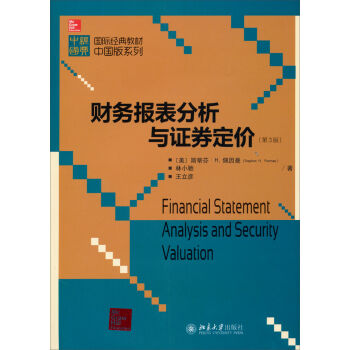
![國際貿易理論與實務雙語教程/全國高等院校“十二五”規劃教材 [Theory and Practice of International Trade A Bilingual Course] pdf epub mobi 電子書 下載](https://pic.tinynews.org/11496987/53bfc03dN540277e9.jpg)
![美國商學院原版教材精選係列:行為金融學(心理、決策與市場) [Behavioral Finance Psychology,Decision-Making,and Markets] pdf epub mobi 電子書 下載](https://pic.tinynews.org/10400992/06d55398-fe77-4902-89c4-150e49bd6f3d.jpg)
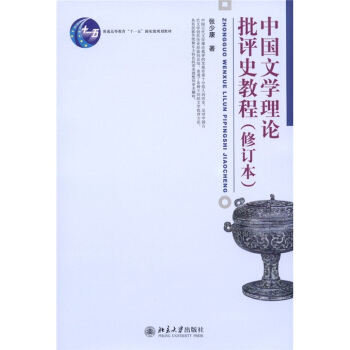

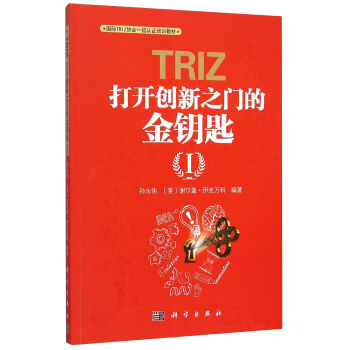
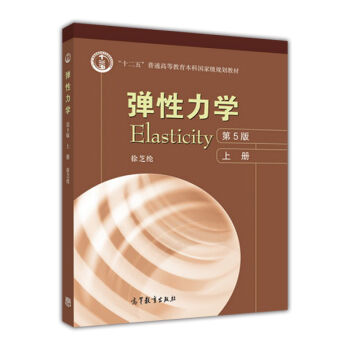


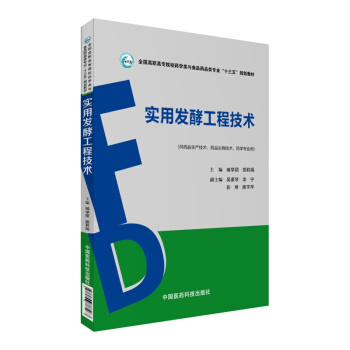
![Python生物信息學數據管理 [Managing Your Biological Data with Python] pdf epub mobi 電子書 下載](https://pic.tinynews.org/12106994/586d25fdN0f9a3bb3.jpg)
![物理化學(上冊 第5版) [Physical Chemistry] pdf epub mobi 電子書 下載](https://pic.tinynews.org/12273914/5a743490N36719f49.jpg)
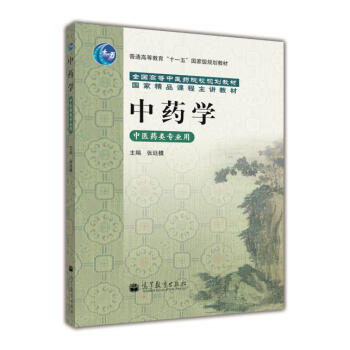
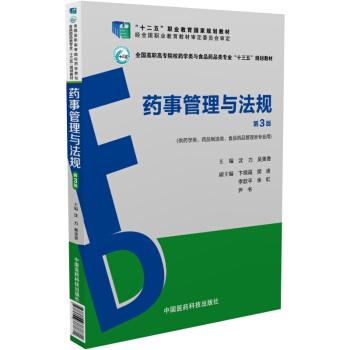
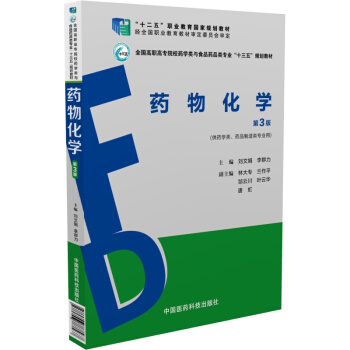
![物理化學(第五版 下冊) [Physical Chemistry] pdf epub mobi 電子書 下載](https://pic.tinynews.org/12273930/5ac96d17N4e949300.jpg)
